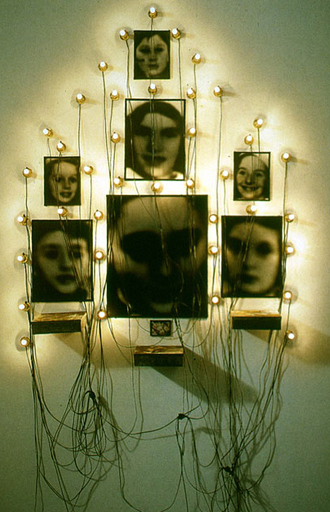Andrew Graham-Dixon reviews a retrospective show of the work of Christian Boltanski at the Whitechapel Gallery
Photography, it has often been said, is an inherently morbid medium. The photograph, Jasper Johns once remarked, is ''an object that tells of loss, destruction, disappearance''; Roland Barthes, in Camera Lucida (a book largely prompted by his preoccupation with a fading photograph of his mother), has described photography as ''a figuration of the motionless and made-up face beneath which we see the dead''. Every photograph, recording a slice of past time, also records a death of sorts. Speaking, always, in the past tense, the photograph is a memorial to something that can never be the same again.
Death takes many forms in the exhibition of work by Christian Boltanski at the Whitechapel Art Gallery, most of them photographic. Boltanski, the most single-mindedly morbid artist working today, has based an entire career on his obsession with mortality. Take one of his most recent works, the bluntly titled and entirely characteristic 364 Dead Swiss. This, like much of Boltanski's work, is art aspiring to the condition of the archive: a wall covered from top to bottom with 364 top- lit photographs, blown up from the obituary pages of a Swiss newspaper, whose mostly smiling, mostly unconcerned subjects are united only by their nationality and their posthumousness. It is matter-of-fact to the point of banality, but that seems entirely intentional - Boltanski's point being, presumably, that all are equal in the commonwealth of the dead. The other message of 364 Dead Swiss is as simple and direct: you, as they have done, will die.
Boltanski's numbed, documentary approach to his chosen theme of death has led some to see him as a sort of anthropologist of modern society. An early work, his 1974 Inventory of Objects that...


